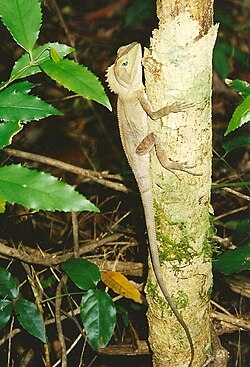| Lophosaurus spinipes | |
|---|---|
 | |
| At Boorganna Nature Reserve, near Taree. NSW | |
| Scientific classification | |
| Kingdom: | Animalia |
| Phylum: | Chordata |
| Class: | Reptilia |
| Order: | Squamata |
| Suborder: | Iguania |
| Family: | Agamidae |
| Genus: | Lophosaurus |
| Species: | L. spinipes |
| Binomial name | |
| Lophosaurus spinipes (A.M.C. Duméril, 1851) | |
The southern angle-headed dragon or southern forest dragon (Lophosaurus spinipes) is a species of agamid lizard endemic to Australia. [2]

